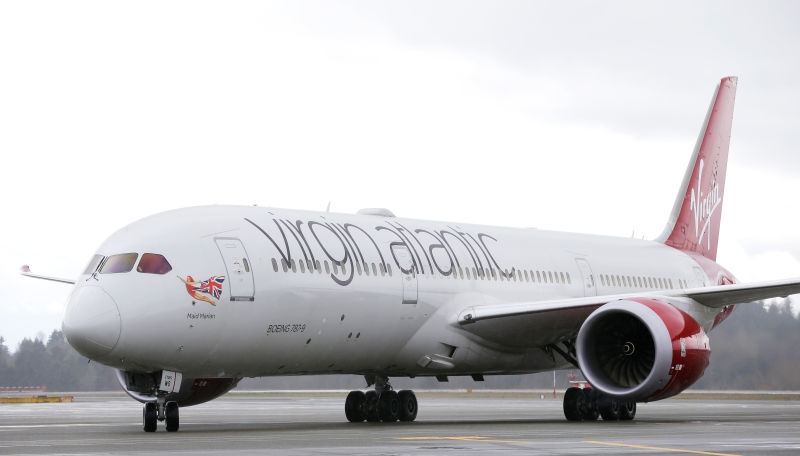
A Virgin Atlantic flight making the grueling journey from Los Angeles to London yesterday hit a ground speed of at least 801 mph, thanks to a streak of fast-moving air in the jet stream over Pennsylvania. You’re probably wondering how, as breaking the sound barrier over land is illegal, but despite surpassing the speed required to break the sound barrier, there was no sonic boom.
And no, the Virgin Atlantic flight wasn’t in some super-special mystery jet that you haven’t heard of. And no, they’re not bringing the Concorde back. Here’s what happened.
The 801 mph ground speed of the Boeing 787-9was reported on the flight tracker system Flight Aware, and was tweeted out by meteorology teacher Stu Ostro:
The typical cruising speed for a plane of this size is only around 560 mph, which is a long way off of the speed of sound’s 767 mph (although the speed of sound does vary based on altitude, air temperature, pressure, and on and on, and that 767 mph figure is based on a reading at sea level under standard conditions).And that’s exactly why there was no sonic boom for this 801 mph flight. I’ll let the Washington Post explain:
With a speed max currently over central Pennsylvania, airplanes flying through the jet will either be sped up or slowed down big time, depending on their direction of travel. It’s like the moving walkway at the airport. You have your own forward speed, but if you continue this velocity in an environment that is itself moving, it can propel you at an impressive rate.
[…]
Commercial aircraft ordinarily can’t break the sound barrier, because they’re not designed to handle the sudden increase in drag and other aerodynamic effects associated with those speeds. Despite a ground speed that high, the plane didn’t come close to reaching that threshold because it was embedded in the swiftly moving air.
Advertisement
So the plane, in this case, was essentially carried along at those speeds by the air around it, so that while it’s ground speed was faster than the speed of sound, its air speed was not. Otherwise the stress of flying near or over the speed of sound would add significant strain on the body of the plane and its control surfaces, and potentially spell disaster. If a plane isn’t meant to go faster than the speed of sound, then it really, really shouldn’t.
Despite not being in the jet stream over the northeast very long, the plane managed to arrive 48 minutes early in London, and most flights headed east over this area of North America are expected to have shorter flight times in the coming days. Of course, any flight going the other direction will either have to fight the wind or go around, so they’re expected to have longer flight times.
The jet streams winds are typically faster-moving in the winter, the Post reports, because of the maximized temperature differences between the northern and southern parts of North America.
Advertisement
It’d be pretty shocking to look at the flight tracker in my headrest infotainment display on a flight like this and see anything north of 700 mph, let alone 800 mph. The best bonus of the wind boost is that it pushes you past Pennsylvania as fast as possible.













